How to Treat & Prevent Bunions
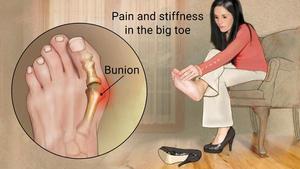 Bunions, also known as Hallux Valgus, are one of the most common toe alignment problems. They can be incredibly painful and difficult to treat because they sometimes reoccur even after surgery. If they worsen, they can affect how your other toes align, causing more issues like hammertoe, overlapping toes, and other alignment issues.
Bunions, also known as Hallux Valgus, are one of the most common toe alignment problems. They can be incredibly painful and difficult to treat because they sometimes reoccur even after surgery. If they worsen, they can affect how your other toes align, causing more issues like hammertoe, overlapping toes, and other alignment issues.
Understanding what bunions are and how they form can help you make a better decision on how to treat your bunions. Once treated, you should also consider working harder to prevent them returning in the future.
I will be posting more detailed posts soon on specific devices you can use before and after bunion surgery, but for now let’s learn as much as we can before diving into buying anything!
What are Bunions?
Bunions occur when the big toe starts to slowly point toward the other toes, causing the joint that connects the big toe to the foot to grow larger. As it continues to move over time, a bunion can cause the other toes to become poorly aligned as well. In severe cases, the big toe will shift fully under the second toe, causing overlapping.
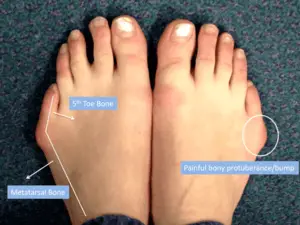
Aside from being painful, they cause the foot to look misaligned and deformed. Shoes won’t fit properly, and you may experience self-consciousness when wearing open-toed shoes. You may also find that you have limited mobility in your big toe due to a bunion. Since bunions cause your toes into misalignment, they may also cause more corns and blisters on your feet due to excess friction in your shoes.
Some people may also experience a similar bump on their little toe, which is called a bunionette. It is the same condition, just on the outside of the foot.
What Causes Bunions?
It’s not entirely certain what causes bunions in some people. There are some things that doctors have found can either cause or worsen bunions. Here are a few examples of things doctors think may cause them:
#1) Genetics

Doctors have determined that in some cases, bunions can happen no matter how hard you try to prevent them. If you have a family history of bunions, it’s likely you will develop them at some point. Sometimes people are just born with feet that are more prone to getting bunions, whether it’s poor foot alignment or problems with joints.
Unfortunately, if your bunions are the result of genetic factors, it’s tough to say if surgery can have a permanent effect. Those with genetically misshapen feet are more likely to have bunions return after surgery, or require several surgeries to be effective.
#2) Ill-Fitted Shoes
While researching bunions, it seems doctors severely disagree on whether shoes can cause bunions to form. Some argue that wearing narrow, tight fitted shoes or high heels cause the bones in the feet to slowly adjust to fit the shoes. Others argue that the feet won’t adjust to the shoe – the shoe will stretch to accommodate the feet. We do know that bunions are more common in women who frequently wear dress shoes, and occur quite commonly among ballet dancers – two groups who often wear tight, narrow footwear.
What doctors do agree on is that once a bunion is formed, wearing ill-fitting shoes will almost always make it worse. Most doctors recommend wearing wider, better fitting shoes whether you are looking to prevent or fix a bunion.
#3) Rheumatoid Arthritis
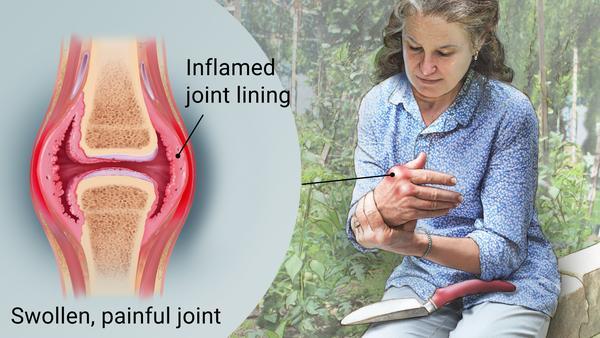
Bunions are also common among people with different types of arthritis, in particular with rheumatoid arthritis. This particular condition causes the joints to swell and potentially re-settle incorrectly. Growing up with rheumatoid arthritis makes getting bunions even more common, as the bones are still forming and may do so incorrectly.
Any kind of inflammation of the joints is bad for the bones, so if you know you have a family history of arthritis, or already have it, make sure to take care of your feet!
#4) Foot Injuries
Bunions and bunionettes (bunion of the little toe) can easily be formed as the result of foot injuries, both minor and serious.
If you dislocate the joint attaching your toe to the foot, re-setting it improperly can lead to bunions. They can also form as the result of stubbing your toes too often, breaking your toes, or breaking the bones near the joint. Breaking a bone near the joint can also cause bone spurs or bumps to form that push the toes out of alignment.
How do I Treat Bunions?
Doctors often advise patients to take a conservative approach to treating bunions. As long as the bunions aren’t severe, they will often have you try non-surgical methods first. If it is severe, or causing a lot of pain, surgery may be required. However, surgery is not always a permanent fix – many people re-form new bunions after surgery. Here are some options to treat bunions, both non-invasive and surgical.
#1) New Shoes & Inserts
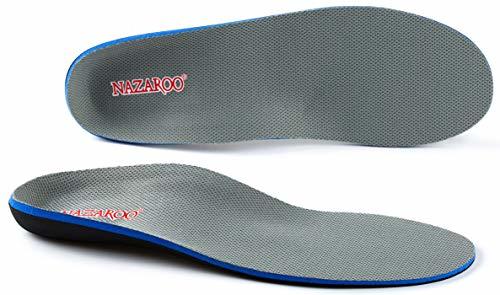
The first thing most people are told to do to treat bunions is to stop wearing tight or narrow fitted shoes, or avoiding high heels. Doctors may also ask you to try adding insoles to your shoes to keep your feet properly aligned. Then you should focus on wearing shoes that allow the feet to stretch out, in the hopes that they just need more space to straighten out.
#2) Toe Stretchers & Splints
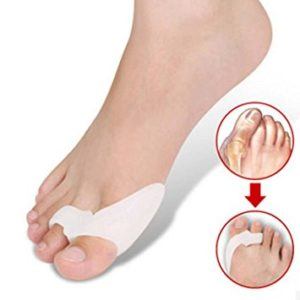 If wearing better shoes isn’t helping, there are several kinds of toe stretchers and splints you can try to “train” your feet back into alignment. Meant to be worn for a short time each day, consider toe stretchers to be like yoga for the feet. As you continue to wear the stretchers each day, your feet will slowly realign and feel better. There are even toe stretchers you can wear inside your shoes during the day to improve posture and foot alignment! We will talk about great ones to use later on, especially for runners and athletes! There are also more rigid toe splints that are meant to keep the big toe in the proper place, or to separate it from the other toes. You can use splints to treat bunions, or as a post-surgery support for the foot.
If wearing better shoes isn’t helping, there are several kinds of toe stretchers and splints you can try to “train” your feet back into alignment. Meant to be worn for a short time each day, consider toe stretchers to be like yoga for the feet. As you continue to wear the stretchers each day, your feet will slowly realign and feel better. There are even toe stretchers you can wear inside your shoes during the day to improve posture and foot alignment! We will talk about great ones to use later on, especially for runners and athletes! There are also more rigid toe splints that are meant to keep the big toe in the proper place, or to separate it from the other toes. You can use splints to treat bunions, or as a post-surgery support for the foot.
#3) Toe Exercises
In addition to using toe stretchers or splints, it’s a good idea to exercise and stretch the feet each night. There are simple exercises and massage you can do to warm up and stretch the tendons in the feet. Exercises can also help with painful heels and arches that often come with bunions.
#4) Anti-inflammatory Medication
Since bunions can cause serious inflammation of the joints connecting the big toes to the foot, taking an anti-inflammatory medication can help. Over the counter pain reducers can help with minor pain and swelling. If you plan to take anti-inflammatory medication over a long period of time, consider talking to your doctor about side effects or other options.
#5) Cortisone Injections
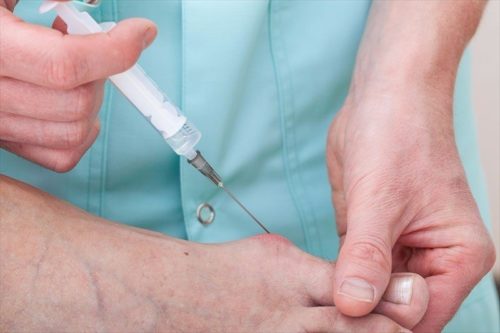
Sometimes, doctors will administer cortisone injections near the joint to reduce swelling and fluid retention. This is a temporary fix, but one that works more effectively than taking over the counter medication. If you have to get this done frequently, or it isn’t working, surgery is probably in your future.
#6) Bunion Surgery
Surgery is the last resort for bunions, and is only done if the patient is in constant pain, or if other methods aren’t helping to fix it. To surgically fix a bunion, a surgeon cuts into your foot to dislocate and realign the bones. In addition to that, they may add in a screw or plate to help keep the bones in place, especially if the bunion was severe. Since this doesn’t always fix the bunion permanently, you may need to go back and have the procedure redone in the future.
What can I do to Prevent Bunions?
When it comes to preventing bunions, that largely depends on how you get a bunion in the first place. If you are genetically prone to getting them, preventing them is futile. They’re going to happen no matter what – all you can do is try to make them as small as possible. If you are a dancer, distance runner, or athlete, preventing bunions has more to do with preventing injuries than anything.
For the rest of us, though, there are things you can do to prevent bunions, or at least prevent them from worsening. Here are some suggestions:
- Wear well-fitted shoes. I found that wearing a half-size larger shoe has helped me immensely with keeping my toes aligned properly. Also avoid wearing high heels as much as possible.
- Walk around barefoot as much as possible. As soon as you get home, ditch the shoes and socks! Allowing your feet to walk around in their natural state can help them stretch out properly.
- Do toe/foot stretches daily to keep tendons and muscles loose and strong!
- Maintain a healthy weight to keep feet from overworking or ending up out of alignment. Regular exercise is also good to keep feet strong as well!
- Use ice and elevation to reduce swelling after a long day of running/walking/standing.
- Wear a bunion splint in your shoes during the day to keep them aligned, or wear one at night to correct improper form.
- If you do think you’re starting to form a bunion, see your doctor early! Don’t wait until your toes are overlapping, or it’s so painful that you can’t walk anymore! Early intervention is key to treating bunions and preventing future ones from forming.
